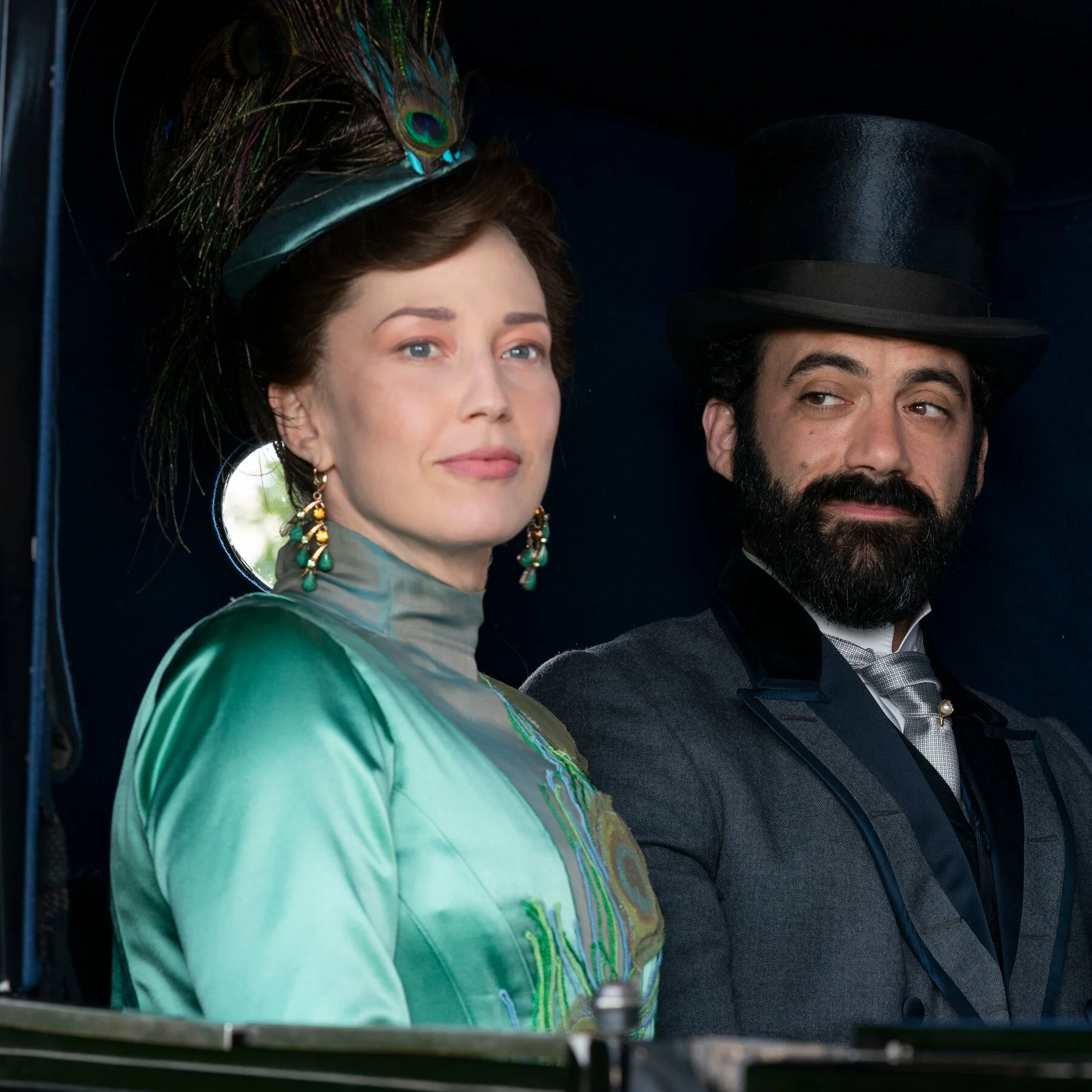Review: HBO’s The Gilded Age, Season 1
Julian Fellowes’ The Gilded Age arrives on HBO with all the trimmings one expects from the creator of Downton Abbey: opulent drawing rooms, glittering gowns, and social hierarchies as delicately arranged as a dinner seating chart. Yet beneath the satin and silver, Season 1 is a slow-blooming study of ambition, class, and the uneasy birth of modern America—a show that begins with promise, stumbles in pace, but ultimately captures the seductive contradictions of its era.
Set in 1880s New York, The Gilded Age centers on the collision between “old money” and “new money,” embodied in two neighboring households on Fifth Avenue. On one side stands the prim, socially entrenched Agnes van Rhijn (Christine Baranski, gloriously imperious) and her sister Ada (Cynthia Nixon, all nervous kindness). Across the street rise the newly minted Russells—railroad tycoon George (Morgan Spector) and his ambitious wife Bertha (Carrie Coon), whose glittering mansion and relentless social climbing threaten the established order.
Carrie Coon is the show’s revelation. As Bertha Russell, she turns what could have been a caricature into something electric: a woman of ruthless intelligence and almost operatic willpower, fighting for entry into a world that sneers at her origins. In contrast, Baranski’s Agnes is both formidable and dryly funny—a grande dame presiding over decline with a teacup and a cutting remark. Their duel, across parlors and charity balls, gives the series its spine.
Visually, The Gilded Age is a feast. The costumes gleam with Worth-inspired precision; the marble staircases and glittering chandeliers of the Russells’ mansion are pure architectural theater. But what distinguishes the show from mere spectacle is its attention to the machinery behind the glamour: stock markets, railroad monopolies, the role of the press, and the tenuous power of women navigating those worlds. Fellowes understands that money and manners are twin weapons—and that America, unlike Britain, never pretended they weren’t.
Still, The Gilded Age is not without flaws. Its first season often feels overpopulated, with too many minor subplots—especially below stairs—echoing Downton Abbey without its emotional clarity. The dialogue can veer toward exposition, and the pacing, particularly in the early episodes, lacks the urgency the stakes demand. Yet when the series focuses on its central tension—the moral and aesthetic tug-of-war between preservation and progress—it begins to shimmer with real energy.
If Downton Abbey mourned the twilight of aristocracy, The Gilded Age celebrates the chaos of its ascent. It is less sentimental, more cynical, and, in its best moments, far more modern. The series captures the uneasy truth that America’s grandeur was built not on grace but on grit—and that the so-called age of elegance was, in fact, a battleground for power disguised as propriety.
By the season’s end, with Bertha Russell triumphantly forcing her way into society’s inner sanctum, The Gilded Age begins to find its voice. It is not yet a great series, but it is a promising one: gorgeous, knowing, and slyly political—a costume drama about capitalism dressed in velvet and lace.
